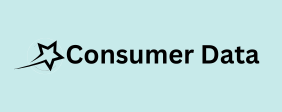First, let me point out that the data your CDP collects customer segmentation comes from different sources and therefore comes in different types. And by that, I mean the method and channel used to acquire it . As a result, you will have four main types of data at your disposal:
Date zero-party
Data from the first part
Data from the second party
Date de la terți
Citiți mai multe despre zero and first part date.
They have their own specifics, and we ’ve discussed them extensively right here . Keep in mind that zero-party data is the most reliable but has the smallest scope, while third-party data has the largest coverage but is the least reliable.
Combining these types of data will help you amestecați și potriviți trăsăturile specifice , comportamente și interese pentru create effective messages și ajungeți la clienții dvs. ideali printr-o segmentare semnificativă.
Let’s look at some popular examples of features that come from different types of data.
Examples of customer segmentation popular features to use for segmentation
Punctul de inceput for many businesses is albania phone number data gender and age. Of course, if a business operates locally, location is a secondary consideration. To add depth, include the stage of the customer customer segmentation journey and the specific activity on the site.
For that extra bit of personalization, you can assign values and personality traits to your customers. In other words, collecting data and segmenting it se referă la persoana ideală de cumpărător (or personas, if there are multiple) that you developed when you started your business.
Depending on the predominant characteristics you choose for your customer segments, you can develop several valuable models. Below, we will briefly cover some of the most popular ones.
Types of customer segments
Now that you know what the features are and what types of data you can aggregate in a CDP, let’s look at the most common customer segments. They are modele testate în timp that provide a great starting point when you start creating your own customer segments.
1. Demographic segments
Demographics are caracteristici generale shared by social groups. You can use these general characteristics to segment your customers by age, marital status, gender, and occupation.
These reveal a wealth of perspective acționabile about your target audience – how well-off they are, why they might be interested, and identify their needs based on these characteristics. Consider a 44-year-old client with a well-paying job – their needs will differ significantly from those of a college student.
2. Psychological segments
Psychological characteristics enter more details . They china data usually include trăsături de personalitate care vă poate spune despre dvs values and customer desires .
Depending on their personality, you can tailor your messages and even your tone of voice when communicating with people from different segments. Psychological characteristics are harder to determine than demographics, but they provide valuable information that can help you align your offerings with your customers’ interests .
3. Behavioral segmentation
When you consider customer behavior, you can segment your base based on modul în care oamenii interacționează cu marca dvs . Did they browse multiple categories without purchasing? Did they add products to their cart and then abandon them?
Customer behavior in your store and their interactions with your campaigns can show you what people care about. These features can even help you tell cât de aproape sunt clienții de conversie and what actions you can take to move them further along their journey.
Aspects such as activity, engagement, and stage of the customer journey are all used to create a behavioral segment.
4. Segmentation based on requirements
Pentru a crea astfel de segmente, trebuie să răspundeți de ce un client ar fi interesat de produsele dvs. Ce beneficii le oferiți if they shop with you?
Fiecare afacere are un punct de vanzare unic și propunere de valoare . Când vă concretizați clientul ideal și identifica punctele lor dureroase , you can present people in demand-based segments with relevant offers that target exactly those pain points.
Tests and surveys are a great way to identify pain points and understand your customers’ requirements .
5. Value-based segmentation
Can you tell how valuable each customer is? Segmenting top customer segment ideas to extract from a customer data platform your base based on how much they spend on your offers can improve your sales strategies.
De exemplu , if you have regular visitors with very few purchases, you can target them with cross-sell offers to increase their value. At the same time, you can reward high-value customers with various bonuses, discounts, loyalty points, and so on to encourage them to continue being at least as valuable.
To segment customers based on their value, you need to monitorizează obiceiurile lor de cumpărare – how often, how much, and what the average value of their purchases is.
